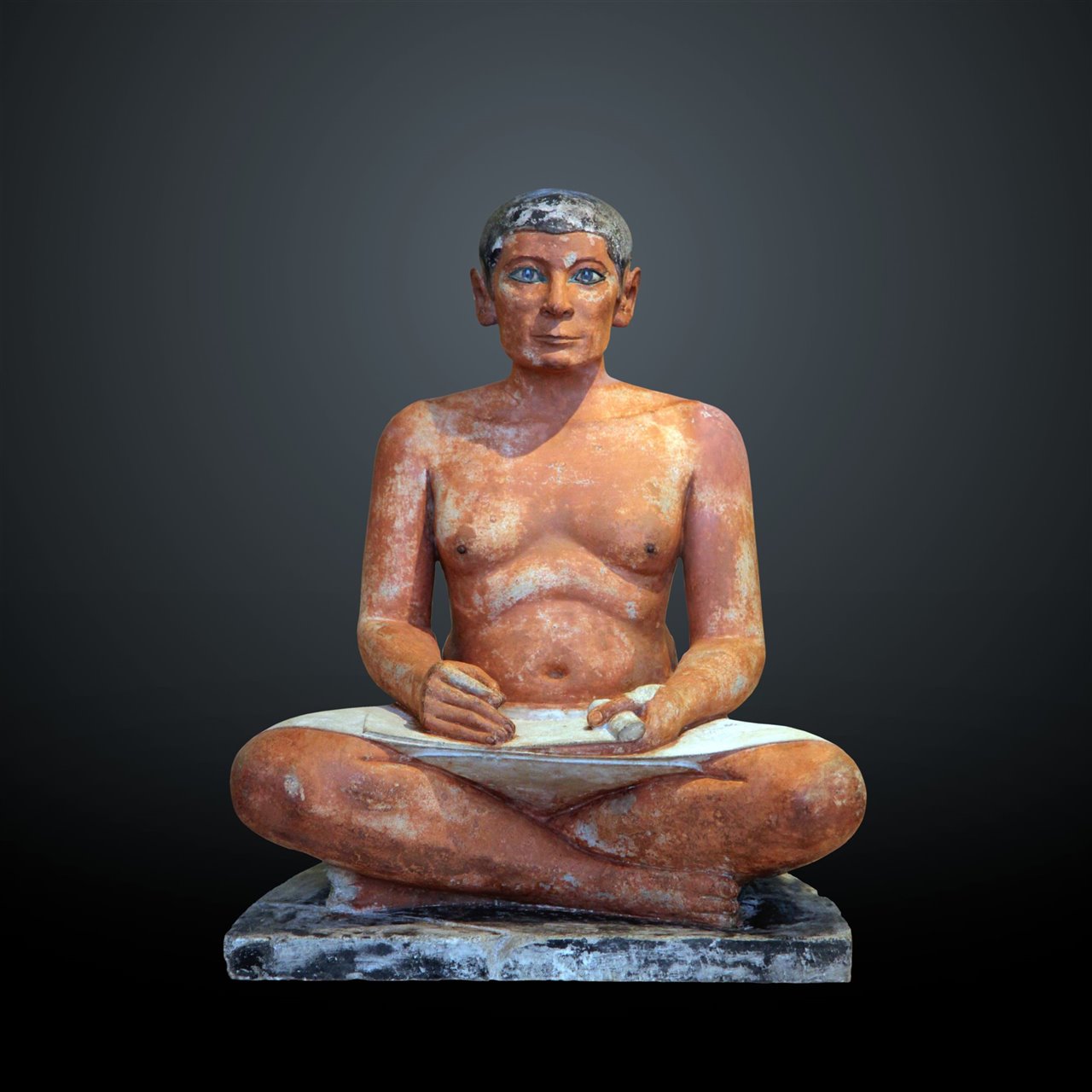
What was the identity of the seated scribe?
The Louvre's statue of the seated scribe is a large Egyptian sculpture dating from the New Empire, circa 1550 BC, but who was this famous scribe?
What do we know about the statue of the seated scribe?
Any visitor or tourist visiting Paris is familiar with this famous statue depicting a seated scribe with a papyrus in one hand and a stylus writing in the other. Famous for its realism and detail, and considered one of the finest Egyptian sculptures in the world, it is currently housed in the Louvre Museum in Paris, France.
The seated scribe is a common depiction in Egyptian art, and is believed to have been created to honor the scribes, who were responsible for carrying out important administrative tasks, such as keeping tax records and managing farms and lands. Scribes were also responsible for writing legal and religious documents.
The Louvre's statue of the seated scribe is particularly interesting because it is one of the few Egyptian sculptures to show a seated figure. Most Egyptian sculptures depict standing figures, which makes this statue unique. The seated position of the statue is also significant, as it suggests that the scribe is in a state of reflection and meditation: the scribe is depicted with a slender, yet muscular body, and his face is sculpted with a serene and concentrated expression. The scribe's clothing is also detailed, with folds and textures that suggest real cloth. The statue also shows a great deal of detail in the hands, including the nails and veins.

Who really was the seated scribe?
The Louvre's seated scribe statue was discovered in 1850 during excavations at the Saqqara necropolis near Cairo. The excavation diary has been lost, so the exact circumstances of the discovery are not known. What is known is that it was found by Mariette's team and taken to Paris to be included in the Egyptian collection of the Louvre Museum.
This limestone sculpture is 53 centimeters tall and was created sometime between the 4th and 5th dynasties, although the name of the owner of the tomb in which it was found and who it represents is unknown. It has been speculated that it could be a character named Kay or Pehernefer, but there is no certainty. However, it is considered one of the most iconic works of Egyptian art of the Old Kingdom.

Although not much is known about the statue itself, it is known that its owner must have held an important position in the pharaonic administration, which allowed him to have a tomb and receive offerings before the cult statue that represented him for all eternity. Although the name of the artist who created this statue is not known, its realism and detail are impressive.
The Louvre's statue of the seated scribe is a valuable piece of Egyptian art, and is considered one of the finest sculptures of its kind in the world. It is a major tourist attraction at the Louvre Museum, and is visited by thousands of people every year. So, if you decide to travel to France you can't miss this unique opportunity to see a piece of high quality Egyptian art and learn more about the life and culture of ancient Egypt.
Meanwhile, if you want to know other facts about the Louvre Museum and get information about the greatest works of art such as the Venus de Milo housed in the main museum of Paris and France, we recommend "The Louvre Art Guide" now available on Amazon by clicking here.
